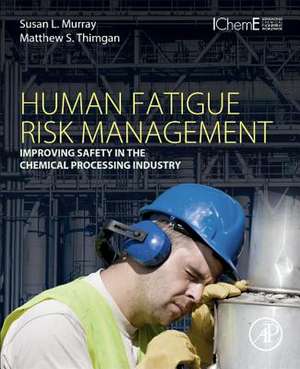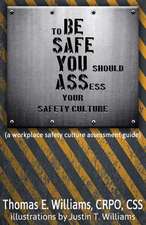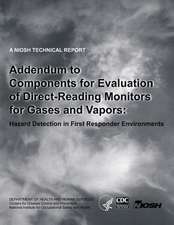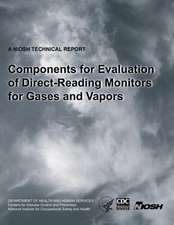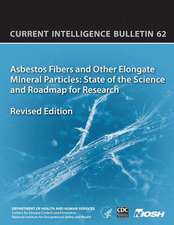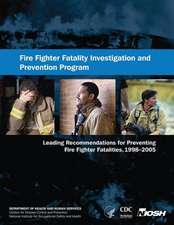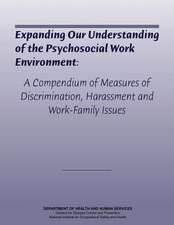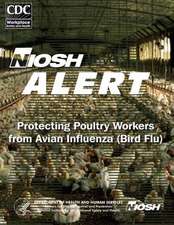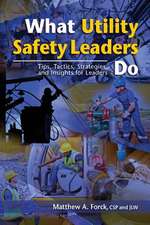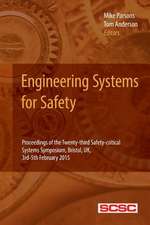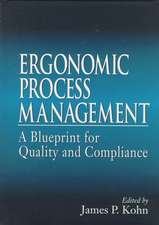Human Fatigue Risk Management: Improving Safety in the Chemical Processing Industry
Autor Susan L. Murray, Matthew S. Thimganen Limba Engleză Paperback – 20 iun 2016
Susan Murray, a recognized expert in the field of sleep deprivation and its relation to high hazard industries, has written this book to be useful for HSE managers, plant and project managers, occupational safety professionals, and engineers and managers in the chemical processing industry. As scheduling of shifts is an important factor in reducing fatigue and accident rates, users will learn the benefits of more frequent staff rotation and how to implement an ideal scheduling plan.
The book goes beyond API RP 755, offering more detailed understanding of why certain measures for managing fatigue are beneficial to a company, including examples of how theory can be put into practice. It is a simple, digestible book for managers who are interested in addressing human factor issues at their workplace in order to raise safety standards.
- Covers sleep, sleep disorders, and the consequences of fatigue as related to high-hazard industries
- Helps improve safety standards at the plant level
- Provides information on how to comply with API RP 755 and related OSHA 29CFR1910 articles
- Relates fatigue and human performance to accidents, helping readers make a case for implementing a human fatigue risk management policy, which, in turn, prevents loss of property and life
Preț: 506.95 lei
Preț vechi: 557.09 lei
-9% Nou
Puncte Express: 760
Preț estimativ în valută:
97.02€ • 100.91$ • 80.09£
97.02€ • 100.91$ • 80.09£
Carte tipărită la comandă
Livrare economică 08-22 aprilie
Preluare comenzi: 021 569.72.76
Specificații
ISBN-13: 9780128024126
ISBN-10: 0128024127
Pagini: 282
Ilustrații: 20 illustrations
Dimensiuni: 191 x 235 x 16 mm
Greutate: 0.59 kg
Editura: ELSEVIER SCIENCE
ISBN-10: 0128024127
Pagini: 282
Ilustrații: 20 illustrations
Dimensiuni: 191 x 235 x 16 mm
Greutate: 0.59 kg
Editura: ELSEVIER SCIENCE
Cuprins
Chapter 1: The consequences of fatigue in the process industries
Chapter 2: Basics of sleep biology
Chapter 3: Circadian rhythms and sleep–circadian interactions
Chapter 4: Sleep hygiene recommendations
Chapter 5: Sleep disorders
Chapter 6: Fatigue and human performance
Chapter 7: Fatigue and accidents
Chapter 8: Fatigue-related regulations and guidelines
Chapter 9: Fatigue counter measures
Chapter 10: Work shifts
Chapter 11: Work environment
Chapter 12: Work task design
Chapter 13: Employee training
Chapter 14: Naps
Chapter 15: Compounds that alter sleep and wakefulness
Chapter 16: Creating a fatigue risk management system (FRMS)
Chapter 17: Accident investigation
Chapter 2: Basics of sleep biology
Chapter 3: Circadian rhythms and sleep–circadian interactions
Chapter 4: Sleep hygiene recommendations
Chapter 5: Sleep disorders
Chapter 6: Fatigue and human performance
Chapter 7: Fatigue and accidents
Chapter 8: Fatigue-related regulations and guidelines
Chapter 9: Fatigue counter measures
Chapter 10: Work shifts
Chapter 11: Work environment
Chapter 12: Work task design
Chapter 13: Employee training
Chapter 14: Naps
Chapter 15: Compounds that alter sleep and wakefulness
Chapter 16: Creating a fatigue risk management system (FRMS)
Chapter 17: Accident investigation
Recenzii
"This book is a must read for process safety and risk management professionals, human factors specialists, managers, and leaders who want to understand the underlying issues related to human fatigue risk management and effective approaches to dealing with these issues." --M. Sam Mannan, Regents Professor and Executive Director, Mary Kay O’Connor Process Safety Center, Texas A&M University
